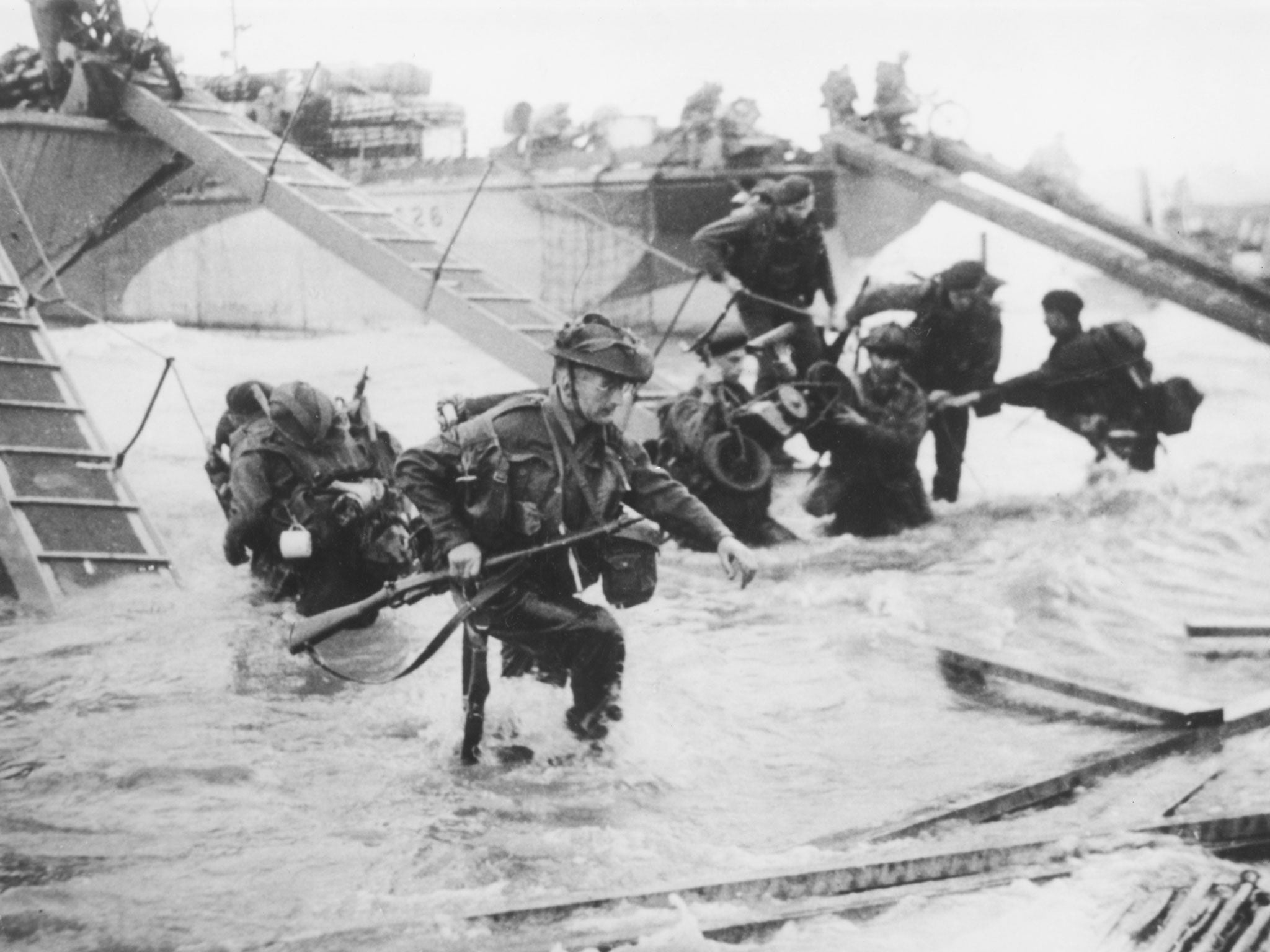Your support helps us to tell the story
From reproductive rights to climate change to Big Tech, The Independent is on the ground when the story is developing. Whether it's investigating the financials of Elon Musk's pro-Trump PAC or producing our latest documentary, 'The A Word', which shines a light on the American women fighting for reproductive rights, we know how important it is to parse out the facts from the messaging.
At such a critical moment in US history, we need reporters on the ground. Your donation allows us to keep sending journalists to speak to both sides of the story.
The Independent is trusted by Americans across the entire political spectrum. And unlike many other quality news outlets, we choose not to lock Americans out of our reporting and analysis with paywalls. We believe quality journalism should be available to everyone, paid for by those who can afford it.
Your support makes all the difference.D-Day is the biggest amphibious assault ever mounted, a vast operation which was years in the planning and was crucial to the outcome of the Second World War.
Here is a timeline of how the Longest Day unfolded:
5 June, 1944
22.00 - Operation Neptune, a seaborne force of five Allied assault groups consisting of 130,000 men, leaves the English coast in 6,939 vessels, travelling through channels already cleared by minesweepers.
6 June, 1944 - D-Day
00.05 - German coastal batteries between Le Havre and Cherbourg are bombed by the Allies.
00.20 - British airborne troops secure Pegasus and other bridges over the River Orne.
02.30-03.00 - Combined bombardment and assault fleets arrive and anchor.
04.30 - St Mere Eglise is captured by US airborne troops and roads leading up to Utah Beach are closed.
05.00 - Britain's 9th Battalion, the Parachute Regiment, helps destroy weapons at the Merville Battery thus protecting troops who will land at Sword Beach.
06.00 - Bombers pound the German shore defences. More than 5,300 tonnes of bombs are dropped.
06.30 - American troops begin landing on Omaha Beach and face a devastating enemy onslaught which pins them there until 1100.
06.30 - American forces begin landing on Utah Beach.
07.10 - US 2nd Army Ranger Battalion attacks the Pointe du Hoc and defends it for the rest of the day.
07.25 - British troops land at Gold and Sword Beaches.
07.35 - Canadian regiments land at Juno Beach.
09.00 - General Eisenhower authorises release of communique announcing the invasion has begun and General Bradley calls for reinforcements.
09.45 - Enemy forces cleared from Utah Beach.
12.00 - Winston Churchill speaks to the House of Commons about the landings.
13.30 - Troops on Omaha Beach begin securing the area.
14.30 - The 21st Panzer Division unleashes a counter attack towards the coast.
16.00 - The British arrive at the coastal town of Arromanches.
18.00 - Some of the 3rd Canadian Division, North Nova Scotia Highlanders, reach three miles inland. 1st Hussar tanks cross the Caen-Bayeux railway, nine miles inland.
19.00 - Command post set up on Omaha Beach.
20.00 - Allied patrols at the outskirts of Bayeux.
7 June, 1944
00.00 - All the beaches are secure. By the end of day the Allies had disembarked more than 135,000 men and had bridgeheads of varying depths along the Normandy coastline.
But on Omaha the situation was perilous as the Germans fought for every inch of territory. By sunset a total of 10,000 men had been killed, injured or were missing.
PA

Join our commenting forum
Join thought-provoking conversations, follow other Independent readers and see their replies
Comments